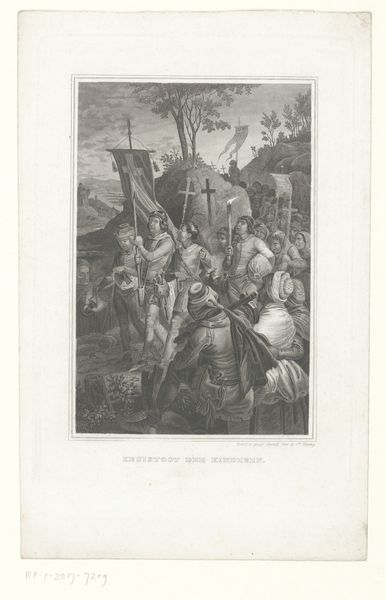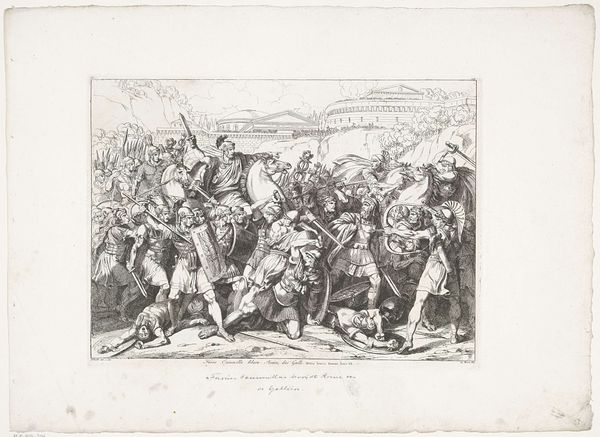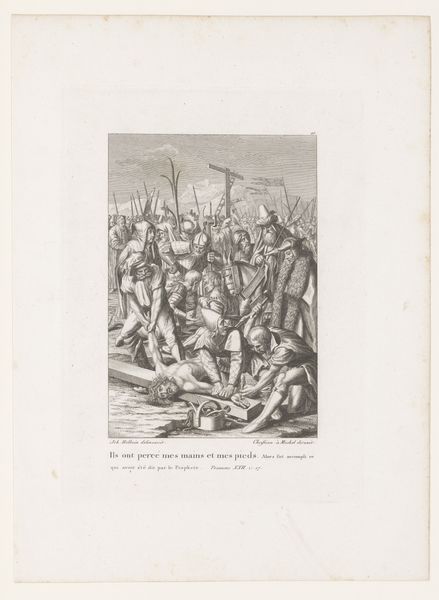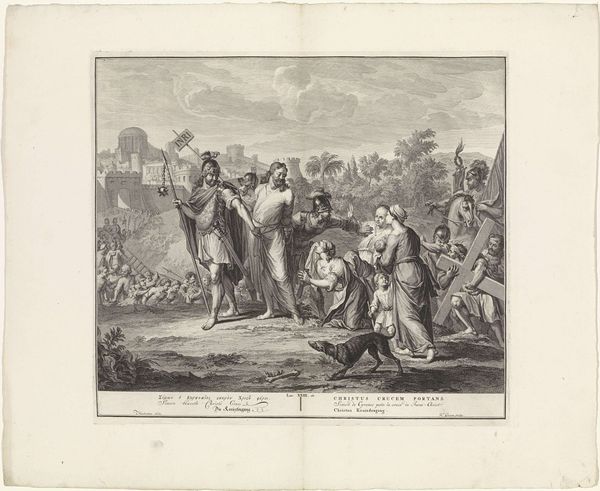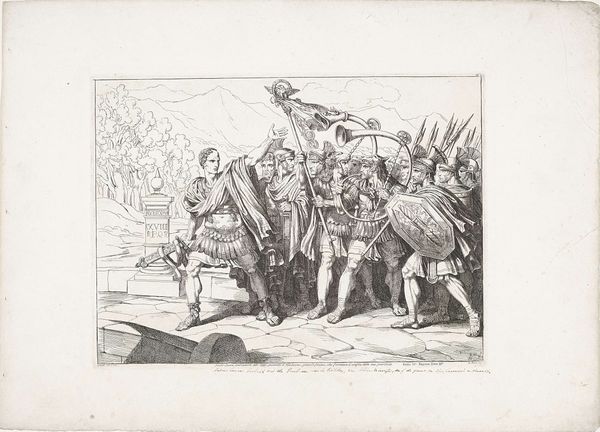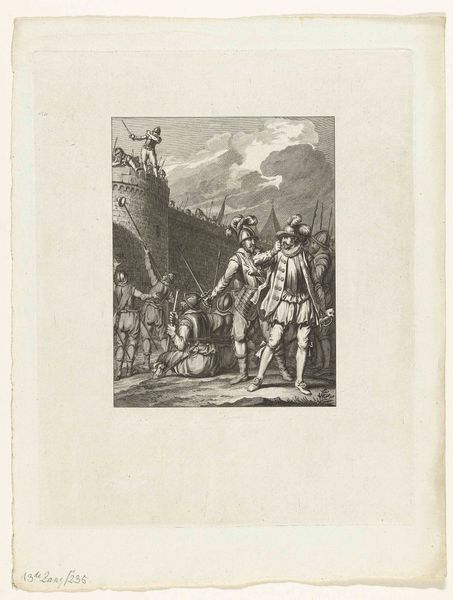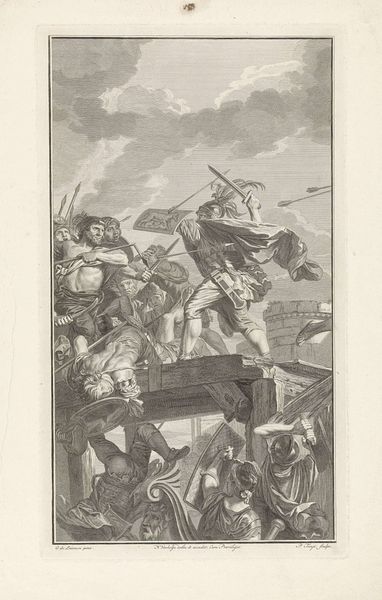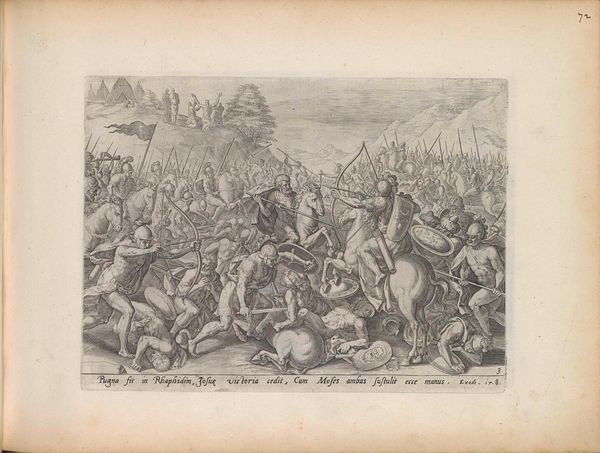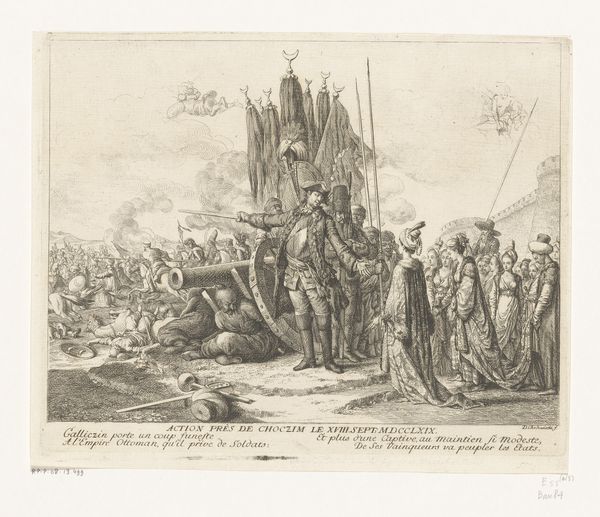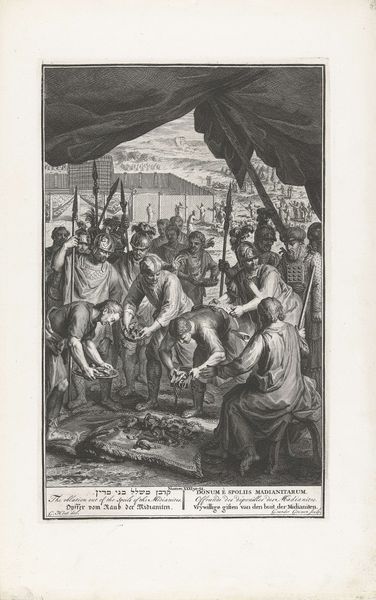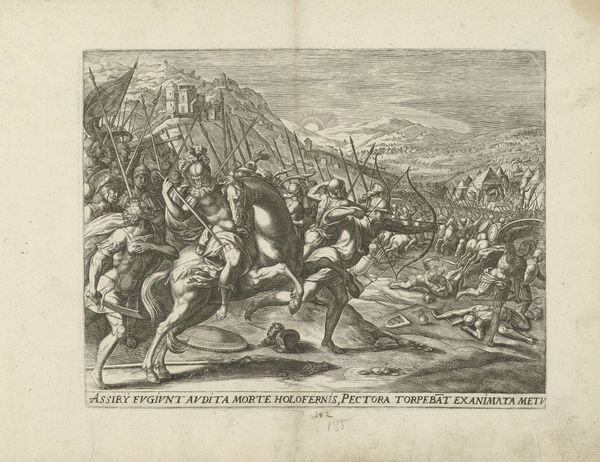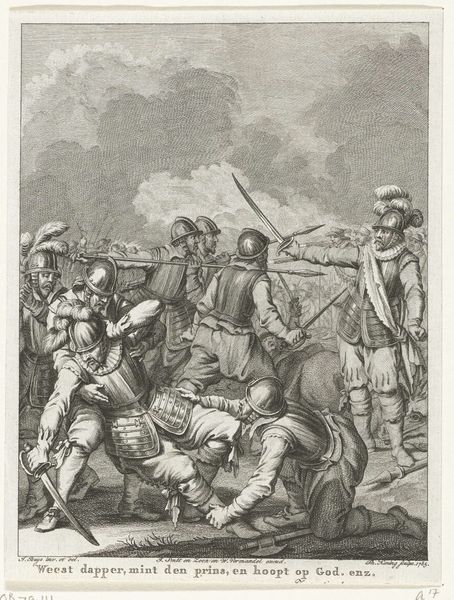
Dimensions: height 262 mm, width 195 mm
Copyright: Rijks Museum: Open Domain
Curator: Welcome. We're standing before "Christus wordt ontkleed," or "Christ Stripped of His Garments," a print made in 1784 by Christian von Mechel, currently held here at the Rijksmuseum. It’s rendered through meticulous engraving. Editor: A first glance tells of immense vulnerability. The jostling figures, the pallid light – it evokes a sense of dehumanization, a stripping away of dignity far beyond just the physical. The scene pulses with both action and dread. Curator: Indeed. The image speaks to the historical power dynamics at play during Christ's Passion. It offers a harsh visual narrative about state violence against marginalized communities. The act of disrobing someone publicly became symbolic. What did it mean for societal control and shaming? Editor: The soldier hammering at the cross base seems strangely focused. While the central drama occurs, he perpetrates with purpose and the Crown of Thorns sits on the ground, like discarded cultural memory. What narratives were lost? Curator: The way Von Mechel utilizes stark lines and shading contributes to this oppressive atmosphere. Think about how Baroque sensibilities were already critiquing unchecked power during the period of enlightenment. This engraving directly confronted social hierarchies through depictions of institutional violence, an enduring image that implicates everyone watching in the scene. How might these visual motifs have acted as coded commentary on political oppression in 18th-century Europe? Editor: Symbols continue to resonate, then. It's unnerving how relatable it feels. Despite its 18th-century creation, stripping a figure of agency resonates with the past but continues even now. It seems so much of this history is our now too. Curator: Reflecting on "Christ Stripped of His Garments" offers not only an examination into religious art of the Baroque period, but compels critical insight on social oppression through systems that endure and remain ever-present today. Editor: Agreed. By analyzing the interplay between the imagery, composition and intent we glimpse continuity in culture and conflict, between eras—and within ourselves.
Comments
No comments
Be the first to comment and join the conversation on the ultimate creative platform.
